Latest Conversations
Can Lifelong Health Habits & Weight Loss Drugs Coexist?
Oct 15, 2024
Can lifelong, lasting habits be established while using weight loss drugs? The short answer: yes. If utilized right. Although complex, weight loss medications like GLP-1 actually offer really groundbreaking opportunities to change the life & health trajectory of individuals. As a quick review, GLP-1 medications are a class of drugs that mimic our natural GLP-1 hormone which alerts an individual in feeling full, balances the blood sugar and insulin response to food, and slows the process of gastric emptying.
GLP-1 Therapies help address two huge problems: overeating and “emotional eating”. To explain in the shortest way possible: Americans easily overeat because of the portions & low quality of the majority of our food, and Americans emotionally eat because the everyday individual is under a lot of modern stress.
The most quality way to improve this would be to teach an individual to seek out whole, nutrient dense foods and focus on satiating proteins, fats, and fiber. In addition, you’d also promote lifelong stress reduction techniques and tune into your body’s individual signs of stress. In a perfect world, this is the way. Eating real food, getting movement, lowering stress, resting, and having more fun as a result of slowing down. And this is how I like to promote true wellbeing and Radiant Health, through these main foundations. 90% of people should take this route. 10% of people may have genetic, metabolic, cognitive, or socioeconomic factors that prevent them from easily taking this route.
Here are some of the other barriers to those foundations, some would argue. Price of quality food, poor accessibility of exercise/nutrition, lack of education, lack of motivation, not enough “time”. And where socioeconomic factors play a huge role, movement is free, nature is free, rest is free, slowing down is free, and there are ways to purchase nutritious whole foods without buying all organic for hundreds of dollars at an actual Whole Foods.
The ways in which GLP-1 therapies address some of these big problems we face as a country, is number one, via overeating. So many people go to Europe and come back feeling healthier and having “lost weight”, which can likely be attributed to walking more, enjoying more quality foods, and healthier portions too. My patients on low dose GLP-1 therapies enjoy the fact that they can eat, enjoy, and simply not overeat. It re trains the brain. If they overeat, they get a stomach ache or feel “blah”. They are also learning to listen to their body, which is giving stronger signals on GLP-1 therapy. Feeling full and fatigued sounds like a drag, where feeling satiated and energized sounds invigorating. Throughout this therapy, I teach individuals how to gauge how much protein is in different food sources. This is a lifelong habit they now know to prioritize, and more importantly for the why.
What is the why? Protein not only keeps us satiated but is the building blocks for so many processes in our body. I have heard health professionals joke that “eating a high protein diet is nature’s Ozempic” and frankly it holds true. A high quality protein will naturally increase your natural GLP-1 hormone to signal fullness. My patients on GLP-1 also prioritize protein to preserve healthy muscle, paired with strength training for maximal muscle health. This is a required part of a successful treatment plan. Protein and weights. Losing body fat while preserving or even growing muscle is a slow process. Slower yields more sustainable and lifelong habits.
Remarks from my patients on GLP-1 so far have been
“I feel so much better now that I feel the hunger cues more and don’t constantly overeat portion sizes”
“I can focus at work more because I’m not thinking about the next meal constantly”
“I have more energy when I eat protein”
“I feel less brain fog eating protein every couple of hours instead of big meals and feeling tired after”
“I feel like I have my life back”
We have seen different generations experience all sorts of fad diets, weight loss drugs etc. Low Carb, Keto, Atkins- if it has a fancy name it usually doesn’t yield long term sustainability. What I find especially helpful about GLP-1 medications is that there is fixed or “required diet”, which provides me the opportunity to educate on lifelong eating for disease prevention and quality of life. Real food, protein emphasis, healthy fats, healthy fiber. Kind of circling back to the OG food pyramids from 2nd grade. It’s been very eye opening actually how many adults felt like they did not know how to define or choose proteins, fats, and fibers. That lesson in itself I have seen really transform how people go about their day.
These classes medications are ground breaking in nature when in the “right hands”, on both the patient and provider end. You will continue to hear mixed media on them, as with any science and drug advancements. To me I see it as simply another modern tool that can be either used or abused. I also see it as a more productive movement than say the fad diets of the 80’s. It’s not based upon cutting out carbs, only eating meat, only eating vegetables- but rather learning about how we need real food from every food group for thriving health of the mind and body. It also helps individuals get to know their metabolic health, what things support their blood sugar, and what habits make them feel “blah”. It cuts out what some call “food noise” and actually creates space for learning about nutrition. It’s a new opportunity in medicine and in public health. The best thing that we can do from the provider end is actually tell inappropriate GLP-1 candidates “no”, and provide direction in the light of diet and lifestyle. In general, we need to start here more often. I feel lucky to be in the arena of medicine where I do have time to discuss these factors with patients. In the hospital, I had about 10 minutes pre discharging a patient to teach them what blood sugar even is and does.
At the end of the day, these medications are preventing heart disease and Type II diabetes, which are some of our country’s biggest concerns. They are also helping combat polypharmacy (everyone being on multiple drugs) in patients who, for example, can come off blood pressure, heart medications, or even insulin after GLP-1 therapy. So, the next time another public figure has an “Did they do Ozempic” scandal, hopefully it now makes more sense what these therapies were actually intended for and how they are affecting everyday people and everyday life. As a nurse focused on the holistic approach, it’s a potential tool that if used with lifestyle adjustments, is not just a band aid. It may get a patient over the “hump” to a longer, more quality life- with new lifestyle habits & perspectives to show for it too.
What’s trending in wellness & rejuvenation?
Oct 10th, 2024
Happy fall ya’ll!
I have always enjoyed writing and feel like getting some blog posts back up is a great way to connect with patients, friends, and family looking to improve their health & wellbeing.
If there are specific topics you think would make an interesting or helpful blog post, message it to @nursefaithmedical on Instagram.
Today I want to talk about what is trending in wellness and what procedures I have been doing a lot of. For starters, it is now fall in San Diego and therefore laser rejuvenation has picked up. You may have heard of red light therapy, and seen people wearing funny masks at home. In the clinic setting, we do intense pulsed light therapy, which is a way of utilizing the power of long wavelength light to rejuvenate your skin cells. Red light at home, or the trendy red or blue light yoga classes do hold immense benefits, so knock yourself out & enjoy its benefits for decreasing inflammation and promoting stress reduction. When it comes to the skin, doing a clinical grade laser 1-2 times per year is still far more effective for actual skin health. I am all for things you can do everyday to relax and de stress, so if red light is in that routine, I think it is great. As for clinical IPL lasers, I use this on my 20 something year old patients looking to preventatively enhance skin health, and for my 60 year old patients with visible brown spots from sun and fun over time.
Microneedling in general is another popular “trending” treatment but is really just ancient Chinese medicine circling back around in modern forms. The one I work with is radiofrequency microneedling, the maker is called Cynosure and the device is called Potenza. The needles damage your skin, and the radiofrequency is simply heat energy to help with more intense collagen & elastin remodeling. These are the structural proteins of your skin, and we make less of them over time, so this treatment boosts these proteins for you. An additional regenerative boost I have been working with for years now are exosomes. Exosomes are excretions from stem cells that tell our cells to repair and to regenerate. Pretty cool. The company we use is called Elevai, and these exosomes come from UMBILICAL cells! The youngest cells we can harness. If these are added to a procedure, I topically deliver them to them skin for an even bigger boost in rejuvenation. These really help the downtime of a procedure and boost collagen in some cases up to 300%. What I love most about this procedure option, is that it is your own body doing the work. Therefore, it is also a great opportunity to discuss with patients: protein intake, exercise, stress reduction, and sleep- all things that will help rejuvenate your cells, mind, & body (all the same thing).
Lastly in lifestyle & fitness: strength training & its benefits seem to be spreading like a wildfire. And I couldn’t be happier about that. More and more women are receiving the targeted marketing that they should be more focused on muscle health for healthy aging. I love this for many reasons. For one, this helps focus fitness on all that an individual has to gain, rather than to loose. Psychologically, this is hugely powerful. We need more optimism in our daily modern lives, and perhaps a strength focused mindset and feeling stronger is one of the ways to increase daily positive momentum. In addition, looking to grow muscle takes MUCH longer than quickly losing simple “weight”, so therefore we shift the mindset to more longevity focused. A win win.
I hope you find time this fall to lift something heavy, to slow down, to engage in self care, and to consider how an optimistic, longevity-focused mindset could shift your daily life and wellness habits.



